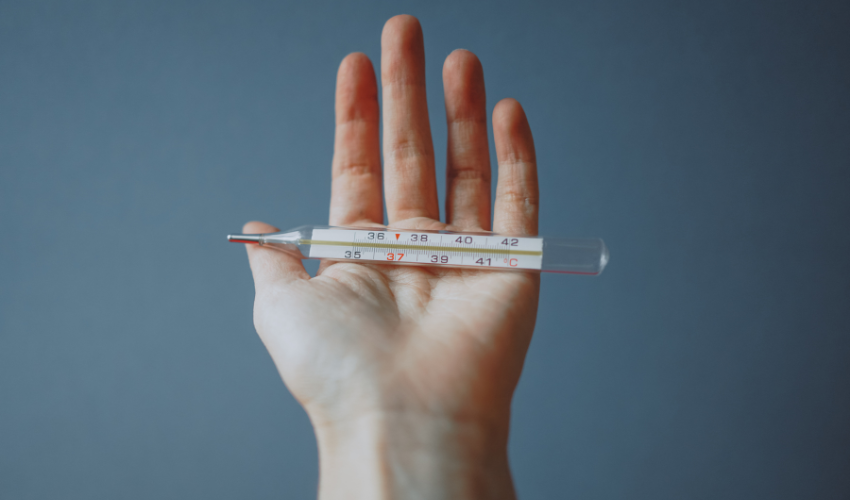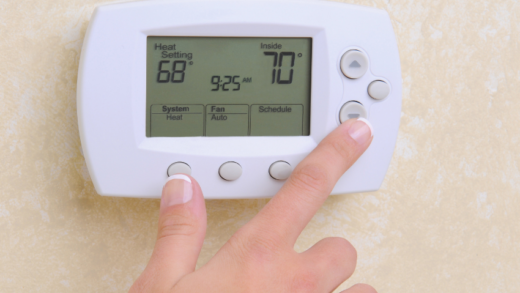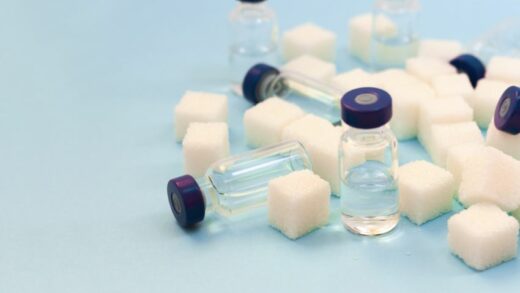Have you ever wondered how a thermometer works? How does a small device accurately measure the temperature of your body or the environment around you? Thermometers are an essential tool in everyday life, and understanding how they work is crucial to their effective use. In this article, we will explore the science behind thermometers and how they measure temperature. From the types of thermometers to the materials used, we will dive into the inner workings of these essential temperature measuring devices.
How a Thermometer Works – Exploring the Science Behind It
A thermometer is a device used to measure temperature. It works on the principle that different materials expand or contract when exposed to heat or cold. This expansion or contraction is then used to determine the temperature of the material being measured. There are several types of thermometers available, each with their unique working mechanisms.
Types of Thermometers
Mercury Thermometer

Mercury thermometers use the expansion and contraction of mercury in a glass tube to measure temperature accurately. The mercury expands when heated and contracts when cooled, and the movement is reflected on the glass tube’s scale.
Digital Thermometer

Digital thermometers use an electronic sensor to measure temperature. The sensor measures the temperature of the material being measured and converts it into an electrical signal that is displayed on the device’s screen.
Infrared Thermometer

Infrared thermometers use the infrared radiation emitted by an object to measure its temperature. These thermometers do not require physical contact with the object being measured, making them ideal for measuring temperature in hard-to-reach or hazardous areas.
Bimetallic Thermometer
A bimetallic thermometer uses two different metals bonded together to measure temperature. The metals expand at different rates when heated, causing the bimetallic strip to bend. The movement of the strip is then translated into a temperature reading on the thermometer’s scale.
Materials Used in Thermometers
- Glass: Glass is commonly used in thermometers due to its ability to expand and contract with temperature changes. It is also transparent, allowing for easy reading of the temperature scale.
- Mercury: Mercury is a popular material used in thermometers because of its high thermal conductivity and ease of expansion and contraction.
- Platinum: Platinum is a metal commonly used in high-precision thermometers due to its high melting point and stability over a wide range of temperatures.
Bullet Points
- Different types of thermometers include digital, mercury, infrared, and bimetallic thermometers.
- Thermometers work by using materials that expand or contract with temperature changes, which in turn activates a mechanism that measures the temperature.
- The materials used in thermometers include mercury, alcohol, thermocouple wires, and platinum.
- The advantages and disadvantages of different types of thermometers depend on factors such as accuracy, ease of use, and safety.
- The accuracy of a thermometer can be affected by factors such as temperature range, response time, calibration, and user error.
- To use a thermometer effectively, you must prepare it properly, insert it correctly, read it accurately, and clean and store it appropriately.
FAQs
Q: Can a thermometer measure both hot and cold temperatures?
A: Yes, most thermometers can measure both hot and cold temperatures.
Q: Are there any risks associated with using a mercury thermometer?
A: Yes, mercury is toxic and can be hazardous if the thermometer is broken. It is recommended to dispose of mercury thermometers properly.
Q: How do I calibrate my thermometer?
A: Different types of thermometers require different calibration methods. Refer to the manufacturer’s instructions for proper calibration.
Q: Can I use a thermometer to measure the temperature of liquids?
A: Yes, most thermometers can measure the temperature of liquids, but be sure to use the appropriate thermometer for the type of liquid being measured.
Q: Can a thermometer be used to measure the temperature of gases?
A: Yes, infrared thermometers can be used to measure the temperature of gases.
Conclusion
Thermometers are an essential tool in everyday life, from measuring body temperature to ensuring that food is cooked to the appropriate temperature. Understanding how thermometers work is crucial to their effective use. From the types of thermometers to the materials used, each aspect of a thermometer plays a vital role in measuring temperature accurately. By knowing how thermometers work, we can make informed decisions about which type of thermometer to use for a particular application and how to use it effectively. So the next time you use a thermometer, take a moment to appreciate the science behind this tiny yet powerful device.






















